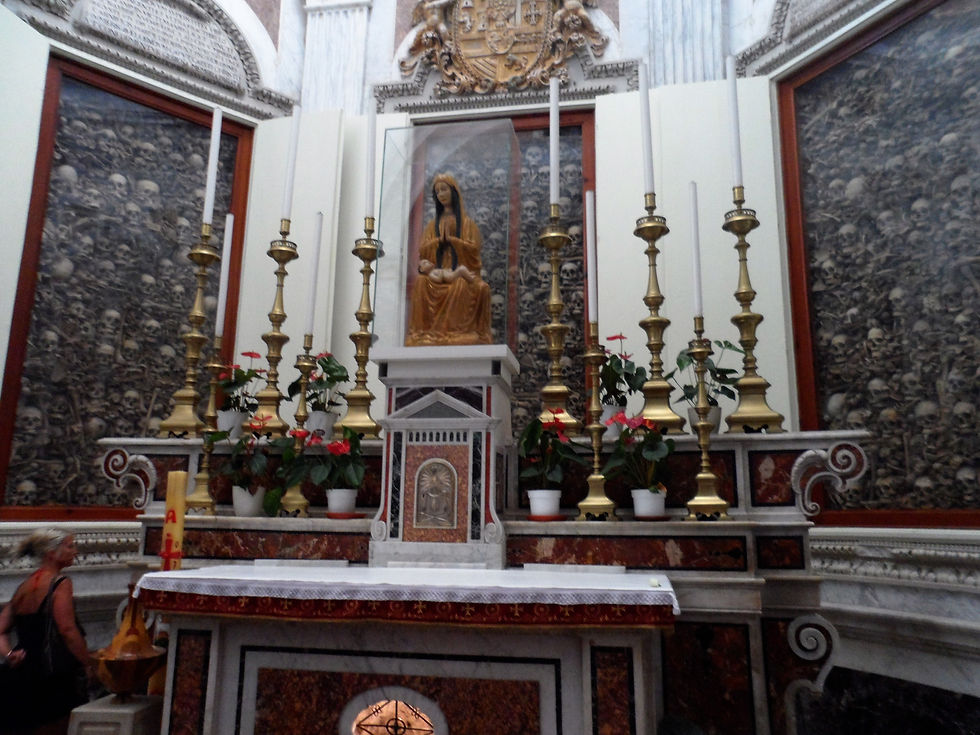Around the Salento, four years ago
- Angelo e Adele
- Mar 6, 2021
- 4 min read
Updated: Dec 20, 2022
Here we are again, waiting for the end of this nightmare called a pandemic, still unable to plan any form of travel, what do we do, are we crying out? Of course not, we have to hold on, wait our turn to get vaccinated and look at the photo albums (sorry for the old-fashioned term, just to understand), at least so we can relive beautiful moments and suggest some itineraries to friends, for when it will be possible to move. For our part, we have opened the album, all electronic, of a short holiday in the car in June 2017 in Salento, the so-called "heel of Italy". Salento coincides with the province of Lecce and, like all of Puglia, is a land rich in history and natural beauties that are illustrated in a myriad of highly qualified tourist guides, since the area has long been a renowned tourist destination. Here is an old map of the Touring Club, with all the locations we talk about in the post:

As usual, therefore, we will not try to compete with the guides, but we will limit ourselves to illustrating the most beautiful and interesting things that we have been able to visit, always from our point of view which is that of accessible tourism. Let's start with the hotel where we spent our week, obviously equipped with rooms for the disabled, wide open spaces, with adjacent entertainment and a small but lovely beach, easily accessible and reachable either on foot or with a train with ramp for wheelchairs: VOI Daniela Resort: Location Conca Specchiulla, Otranto (LE) 0836 806648 https://www.voihotels.com/it/voi-daniela-resort








Taking advantage, if we can say so, of a couple of days of very rough sea, we went around the various places of Salento, starting of course from Otranto and its ancient village:







When can wheelchair users ever access a church crypt? Well, in Otranto there is a Cathedral Basilica whose crypt is accessible from a side entrance overlooking the street, so it can be visited for us, with its 42 different marble columns and its Byzantine frescoes:





After the crypt, we visit the Cathedral Basilica, which at the time was accessible via a mobile ramp that you had to install yourself. Consecrated in 1088 and subsequently modified in the facade and in the Baroque portal, it is equipped with an extraordinary floor mosaic, completed in 1165:







The other strong point of the Cathedral of Otranto is the Chapel of the Martyrs, which collects in seven wall cases the relics of the 800 martyrs who in 1480 were beheaded by Ahmed Pascià for not wanting to convert to Islam; in 1481 Otranto was freed by Alfonso of Aragon who then had the bodies of the martyrs transported to the church of Santa Caterina a Formiello in Naples:

Another important monument of Otranto is the Castle, built between 1485 and 1498 by the Aragonese to defend the city from the Turks. For us it is largely open to visitors, thanks to the presence of two elevators:






the Torre Matta, where exhibitions of excellent level are held:


After the visit to Otranto, we follow the coastal road that you see on the map heading south. We immediately meet the easternmost point of Italy, namely Capo d'Otranto or Punta Palascia, with its lighthouse:



We continue to descend along the coast and we arrive in Santa Cesarea Terme:

And right above the spa rises the incredible nineteenth-century building with Moorish lines, called Villa Sticchi, which someone will remember in the film Nostra Signora dei Turchi by Carmelo Bene.






We continue to walk along the coast, with often overhanging coasts, which unfortunately we can only look at from above:






the Canalone d'Acquaviva:

Tricase Porto:

Torre Nasparo (1565):

the grandiose Canalone del Ciolo, seen in various films and fiction, including Sergio Rubini's L'anima gemella and Edoardo Winspeare's Galantuomini:




And finally we arrive at the extreme tip of the heel of Italy, that is the Cape of Santa Maria di Leuca, with its Sanctuary, the lighthouse and the column erected in 1694 which indicates the place where Peter would have started his preaching, after having disembarked here from East to evangelize our country:



Let's take a look at the Marina di Leuca:


And let's close this tour of Salento with a bang with the beautiful city, kalè polis, which today we call Gallipoli. The ancient city rises on the extremity of the peninsula protruding into the sea and it is preferable not to travel it by car, since it is easily accessible with our vehicles. Let's start with the Castle, dating back to the 16th century:




And walking in the center we arrive at the Cathedral Basilica, dedicated to Sant'Agata:






Our latest images of Gallipoli are those taken at sunset from a seaside restaurant:



How to conclude these short travel notes? Certainly there is still a lot of interesting to see, even inside, so perhaps it is advisable not to visit Salento in the bathing season, if you want to go around without the heat of the summer season. Regarding the availability of accessible facilities, we have not investigated the restaurants much, having chosen the full board option in our hotel. So we hope that the opportunity to travel will come back soon and some of our readers can add their experience to ours. HAPPY FUTURE TRIP TO ALL!

Comments